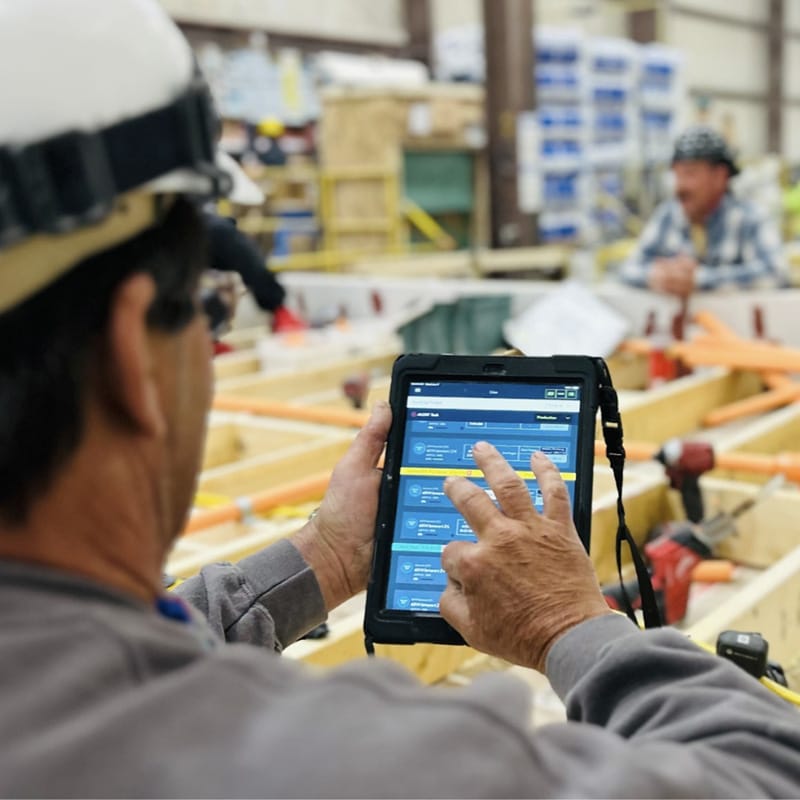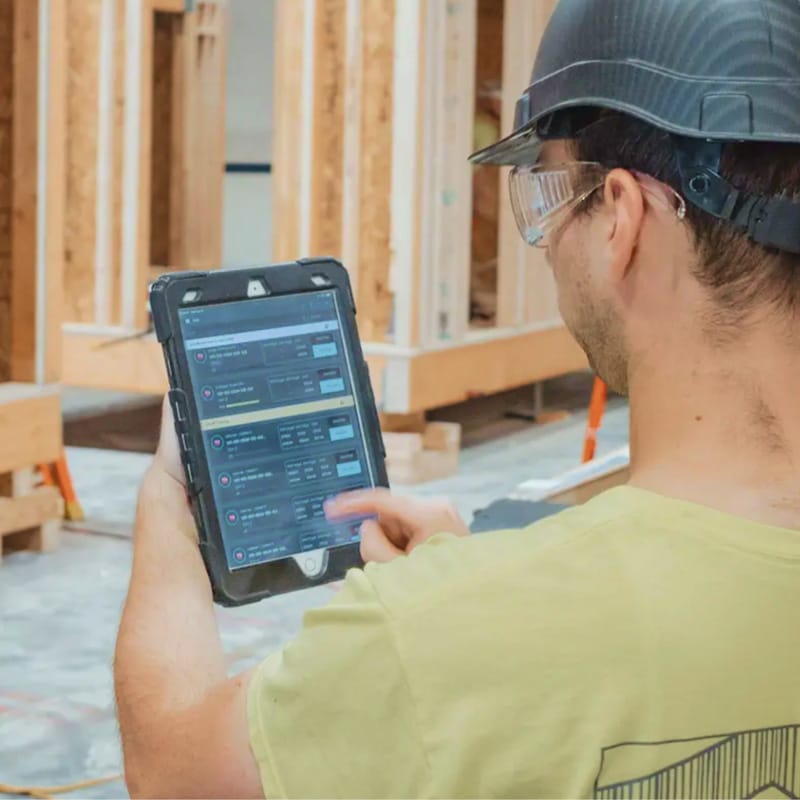The How-To Guide For Prefab Leaders: Actively Manage Your Prefab Schedule
In this How-To Guide for Prefab Leaders, we review how to generate a schedule forecast and factory production plan and how to manage the prefab project cycle to ensure that you are hitting the schedule targets. We review how to leverage technology like Offsight to manage prefab project delivery in real-time and to track factory production, live, to ensure you are meeting your deadlines. If production falls behind schedule, we will review how to take proactive steps to accelerate work and how to better understand the cost implications of these corrective actions.


Generate Your Prefab Project Schedule
We begin by generating the project schedule and factoring in labor capacity constraints. These constraints also apply to the unique prefabrication process for the products you are assembling. With Offsight’s pre-built prefab planning, forecasting and estimating templates, you can define your prefabrication process by your product type (e.g. EIFS panels, bath pods, volumetric modules, etc).
Once each process step is identified and hours are assigned to complete each process, you can then add your current labor resources and capacity constraints to generate an accurate factory production schedule with forecasted start and end dates. Projected delivery dates by collection of modules or bundles of panels (e.g. 1st floor, 2nd floor, etc) can then be provided to other project stakeholders to coordinate on-site installation.


Compare Real-Time Production with Your Planned Schedule
After building your forecasted schedule, you leverage technology like Offsight to track your progress from the shop floor, against your prefab schedule. As operators actively work on products on the shop floor and products move through assembly you can actively tracks status in real time through a mobile app to gain visibility. In order to compare your real time progress against your planned project schedule, you will need to overlay your live production Gantt over your plan.
With Offsight’s Schedule and Analytics Dashboard, you can automatically pull a real time production Gantt chart for all live products on the floor and track when they start prefabrication. It’s important to also track the production status of all live products in the overall assembly, including which processes were completed e.g. framing, and which are still pending and where these processes stand against their forecasted start and end dates.
Identify Schedule Delays and Correcting Course
By automatically linking forecasted product start and end dates, in a digital tool like Offsight, by process and workstation, you can see how each individual product or module is tracking against your plan. Thereby you could track a large modular project by individual module or collection of modules, e.g. floor 1, and immediately identify when production is falling behind your schedule.
In this manner all operators, team leads and supervisors can see when products and processes need to be completed to achieve your schedule targets. If updates to your forecasted schedule are needed to account for delays, a digital solution will allow you to easily move the target start and end dates in your plan. This will ensure you are always tracking your progress and managing prefabrication against your overall project schedule.
By leveraging technology like Offsight to communicate updates to all stakeholders in real time, you can enable collaboration and coordination throughout the project lifecycle.
More from Modular Advantage
Resia: Breaking All the Rules
Resia Manufacturing, a division of U.S.-based Resia, is now offering prefabricated bathroom and kitchen components to industry partners. Its hybrid fabrication facility produces more precise bathroom and kitchen components (modules) faster and at lower cost than traditional construction. Here’s how Resia Manufacturing does it.
How LINQ Modular Innovates to Bring Modular To The Market in the UAE and Beyond
LINQ Modular, with an office and three manufacturing facilities in Dubai, is a modular firm based in United Arab Emirates. The company is on a mission: to break open the housing and construction markets in the Gulf Cooperation Council (GCC) area with modular.
ModMax: Redefining Modular Construction with Confidence and Precision
ModMax was born out of frustration—frustration with five persistent pain points in modular construction: Permitting bottlenecks. Production delays. Rigid designs. Disconnect between “the office” and the field. Lack of transparency and communication.
LifeArk: Disaster-Resilient Housing from Recycled Plastic and 100-year-old Technology
Wee compares LifeArk’s housing units to Yeti coolers, as they are built similarly. Each component takes 15 to 20 minutes to manufacture, has an R-value of 40, and includes molded slots and chases for wiring, plumbing, fire sprinklers, and other utilities.
Building the Future of Modular Edge Infrastructure
The edge data center market is expanding rapidly, driven by the surge in AI workloads, IoT adoption, and the need for localized compute power. In these environments, sustainability, scalability, and reliability are non-negotiable. Cooling is among the most complex challenges for operators—and one of the most decisive factors in long-term success.
Accelerating Light-Gauge Steel Construction: A Semi-Automated Digital Workflow for Off-Site Projects
For construction professionals, the message is clear. By adopting semi-automation and digitalization, companies can deliver projects faster, more accurately, and more profitably, while also building stronger collaboration across teams. The approach is not about replacing people with machines, but about empowering people with better tools and processes.
Why Modular Data Centers Are Gaining Momentum
Artificial intelligence, high-performance computing, and edge applications push the limits of traditional “stick-built” data centers. They take years build, often struggle with high density workloads, and aren’t optimized for deployments near end users. Modular data center platforms are purpose-built to address these challenges, offering flexibility and scalability to adapt to evolving technologies, while opening new opportunities for the modular construction industry.
Supply Chain Innovation in Action: 5 Habits Every Modular Leader Should Practice
By applying these principles to supply chain practices — collaborative planning, strategic procurement, scenario modeling, digital tools, and transparent forecasting — construction leaders can build value chains that are not just efficient and agile, but truly innovative.
Exploring the Role of Modular Integrated Construction (MiC) in Advancing Circular City Principles – A Survey of Stakeholder Perspectives
The survey findings highlight the significant potential of Modular integrated Construction (MiC) in advancing the development of circular cities. By reducing costs, accelerating construction timelines, and minimizing waste generation, MiC offers a promising approach to sustainable urban development.
The Use of MS POLYMER™-Based Sealants and Adhesives in Modular Building
These products combine flexibility and elastic recovery with excellent adhesion to different substrates and have already shown their usefulness in traditional construction. Now it’s time for them to be put to use in the modular construction industry.










